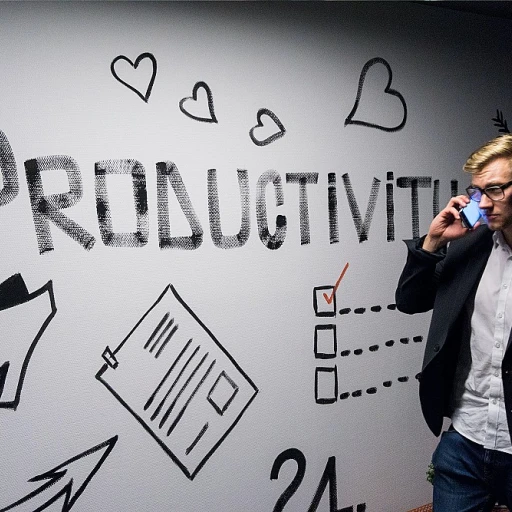
Understanding the Importance of Staff Readiness
Recognizing the Critical Element of Staff Readiness
In the realm of workforce management, understanding and optimizing staff readiness is undeniably crucial for any organization aiming to thrive in today's fast-paced environment. Staff readiness is more than just ensuring your team shows up; it involves making sure that every employee, whether a seasoned professional or a student in training, is prepared to execute their responsibilities effectively from the get-go. When staff are ready, they can respond efficiently to unforeseen challenges, adapt to new tools like management software, and ultimately enhance the overall productivity of the organization.
Healthcare organizations, for instance, are acutely aware of the necessity of workforce readiness due to the direct impact on patient care and employee health. In environments where real-time access to resources and information is critical, a lack of preparation can lead to delays and inefficiencies, affecting not only health outcomes but also staff scheduling and management processes.
Efficient staff scheduling, particularly in healthcare settings, requires advanced tools that ensure faculty staff and other team members are available exactly when needed. Mobile apps for staff scheduling can greatly aid in aligning shifts with real-time demands while maintaining employee health. Additionally, robust document management and control systems serve as the backbone for ensuring staff readiness, providing easy access to necessary information and resources.
Integrating cloud-based solutions into your operations can further enhance scheduling competency, offering organizations the flexibility to adapt swiftly to changing needs and demands. Employees can learn and adapt quickly when they have the right support systems and checklist management in place.
Exploring best practices and innovations such as an agile payroll tracking powerapp can further illustrate how technology plays a pivotal role in optimizing staff readiness across diverse sectors.
The Role of Efficient Login Systems in HR
Maximizing Efficiency through Streamlined Access
Efficient login systems play a pivotal role in modern human resources, especially within healthcare organizations. As organizations strive to enhance workforce management, the integration of robust login systems becomes crucial in simplifying access and improving overall staff readiness. These systems significantly contribute to managing employee health, time tracking, and scheduling competency.
In healthcare settings, where every second counts, skilled staffready access is essential. Implementing a cloud-based login system allows real-time management, giving employee health professionals the ability to keep team schedules precise and up-to-date. This becomes even more critical in scenarios involving staff scheduling and faculty staff oversight, where accuracy directly impacts care quality and organization efficiency.
Moreover, login systems that support mobile app functionalities further enhance readiness. Employees and students can check in or out effortlessly, saving time and reducing the margin for human error. This fosters an environment where management can focus more on staff development rather than mundane process monitoring.
Beyond handling basic access concerns, a competent login system aids in document control and checklist management, crucial for maintaining compliance and competency across the staff. Utilizing these tools not only streamlines operations but significantly reduces the burden on human resources, shifting the focus toward more strategic initiatives.
For more insights into how an efficient system can streamline workflows and enhance competency, you may refer to insights on enhancing efficiency with provider flow login systems. This approach has been proven to elevate staff preparedness, thus fostering a more productive work environment for health organizations.
Challenges in Implementing Login Systems
Overcoming Barriers to Implementing Staff Scheduling Systems
Implementing efficient login systems within organizations can be challenging, but doing so is crucial for optimizing staff readiness. These systems play a significant role in employee access and scheduling, especially in healthcare organizations where health employee readiness is paramount. Organizations often encounter obstacles related to staff scheduling and competency that hinder the effective integration of these technologies.
One common challenge is aligning the new systems with existing workforce management tools. Many organizations rely on complex, legacy systems that don't easily integrate with modern solutions. This can disrupt operations and delay access to important resources for team members. For example, a cloud-based management software might not initially sync with document control protocols or existing scheduling systems, thus requiring a strategic, phased approach to implementation.
Security concerns also present notable hurdles. In an era where real-time data sharing is essential, protecting sensitive employee information such as health data or scheduling details becomes critical. Robust security measures need to be integrated into any mobile app or checklist management tool that allows access to staff schedules, helping secure both organizational data and employee privacy.
Moreover, providing adequate training to faculty and staff is vital. A successful implementation depends not only on the technical deployment of the app or software but also on the workforce's ability to use it effectively. This includes human resources teams that need to learn the intricacies of document management and scheduling competency.
To benefit fully from these systems, organizations must anticipate these challenges and proactively manage them, ensuring seamless integration and operation. Tools that enable a straightforward transition, combined with comprehensive onboarding and ongoing support, enhance staffready deployment, achieving exceptional readiness and competency levels. For more insights on handling access management challenges in human resources, consider mastering the role of an HR data manager.
Best Practices for Enhancing Staff Readiness
Strategies for Improved Staff Engagement and Readiness
Optimizing staff readiness often involves a comprehensive approach, where human resources integrate various best practices to enhance overall efficiency and engagement. One critical area is ensuring seamless access to necessary tools and information. By adopting efficient login systems, healthcare organizations and others can focus on real-time employee health management and effective scheduling.- Mobile Compatibility: Implementing a mobile app that allows healthcare employees and staff to access their schedules and essential documentation anytime and anywhere is crucial. This flexibility can boost employee satisfaction and overall productivity.
- Cloud-Based Platforms: Leveraging cloud-based management software enables real-time updates and easy access for staff across different locations. This is particularly beneficial for healthcare organizations that require timely access to data for effective decision-making.
- Staff Scheduling Tools: An efficient staff scheduling system is vital for maintaining the competency levels within a team. It ensures that all employees, from faculty staff to students learning in healthcare settings, are appropriately scheduled and that their skills are matched with the required health services.
- Competency Management: Keeping track of staff competency through tools like staffready competency ensures ongoing professional development. This aids in quick adaptation to new environments or roles.
- Document Control and Management: Implementing checklist and document management tools is indispensable for maintaining organizational efficiency. These tools facilitate better document control, enabling employees to find necessary information without delays.
Case Studies: Successful Login System Implementations
Examples of Effective Login Systems Driving Staff Readiness
In today's rapidly evolving workforce landscape, various organizations have successfully leveraged efficient login systems to enhance staff readiness and operational efficiency. Here are a few case studies that highlight these successes and what can be learned from them.- Healthcare Organization Utilizing Cloud-Based Solutions
- Educational Institution Enhancing Learn and Access
- Large Enterprise Streamlining Workforce Management
Learning from These Successes
From these examples, it is clear that a carefully selected and implemented login system can lead to significant improvements in staff readiness and operational efficiency. The approaches vary by sector—healthcare, education, and large enterprises—but share common themes: they use real-time, cloud-based systems that prioritize accessibility, competency, and seamless management. Organizations looking to optimize their staff readiness can draw inspiration from these case studies, adapting strategies that align with their specific needs and challenges. Emphasizing the role of technology in streamlining access and scheduling, these examples illustrate the tangible benefits of integrating efficient login systems into HR operations.Future Trends in Login Systems and Staff Readiness
Embracing Technological Developments in Staff Management
The future of login systems is being shaped by rapid technological advancements, which are revolutionizing the way staff readiness is optimized. As organizations strive to enhance operational efficiency, the integration of cloud-based solutions is becoming increasingly prevalent. These systems offer real-time data access, which is crucial for managing staff schedules and ensuring employee health and readiness.
Healthcare organizations, in particular, are increasingly adopting mobile apps that facilitate streamlined access and management of staff data. These tools allow team leaders to manage staff schedules conveniently from anywhere, which is especially beneficial in sectors where shift scheduling competency is essential. With the ability to access this data instantly, there is a noticeable improvement in the overall management of employee health and workforce efficiency.
As the landscape continues to evolve, the role of artificial intelligence in staff readiness is garnering attention. AI-driven competency assessments are being utilized to identify areas for improvement and personalize learning experiences for staff and students alike. This approach not only enhances the capabilities of the workforce but also aligns with the emerging trends in adaptive learning and scheduling software.
The effectiveness of these technologies lies not only in their design but also in their implementation. Organizations that leverage these advancements in their document control and checklist management processes often witness a significant reduction in time spent on manual tasks. This shift allows more time for strategic planning and employee engagement initiatives, leading to a more robust and cohesive team.
As we look ahead, the focus on data-driven decision-making in human resources is likely to intensify. This emphasizes the importance of management software that not only simplifies access but also provides actionable insights into staff performance and readiness. By harnessing the capabilities of cutting-edge technologies, organizations can anticipate and respond to the dynamic needs of their workforce, positioning themselves for sustained success.










